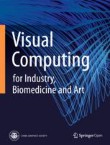China Graphics Society (CGS) is a national, academic, and non-profit organization. It’s founded in 1980 and is affiliated to China Association for Science and Technology. CGS gathers a large number of renowned experts, scholars and science and technology in realm of graphics, with a membership of over 100,000 people. CGS is one of the initiators of International Society for Geometry and Graphics (ISGG), and is its group member. CGS has actively assigned delegations to attend the international Conference on Geometry and Graphics (ICGG) held by ISGG and successfully hosted ICGG in China for many times.
IQAGPT: computed tomography image quality assessment with vision-language and ChatGPT models
Large language models (LLMs), such as ChatGPT, have demonstrated impressive capabilities in various tasks and attracted increasing interest as a natural language interface across many domains. Recently, large ...
